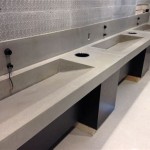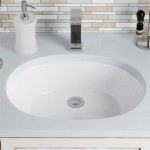How Many Downlights For Bathroom Ceiling Light
Determining the appropriate number of downlights for a bathroom ceiling is a crucial aspect of bathroom design, influencing both the aesthetics and functionality of the space. Insufficient lighting can create a dim, unwelcoming environment, while excessive lighting can be harsh and uncomfortable. The ideal number of downlights depends on several factors, including the size of the bathroom, the ceiling height, the color scheme, and the intended purpose of the lighting.
Downlights, also known as recessed lights, offer a clean and unobtrusive lighting solution, seamlessly integrating into the ceiling and providing a focused beam of light. They are a popular choice for bathrooms due to their ability to provide general illumination, as well as accent lighting for specific areas such as vanities and showers. However, careful planning is essential to ensure that the selected downlights provide adequate light without creating glare or shadows.
This article will explore the key considerations for determining the optimal number of downlights for a bathroom ceiling, providing a framework for achieving a well-lit and aesthetically pleasing bathroom space.
Bathroom Size and Layout
The primary factor in determining the number of downlights needed is the size of the bathroom. A larger bathroom will naturally require more light fixtures to adequately illuminate the space. A small powder room may only need one or two downlights, while a large master bathroom with separate zones may require six or more.
A common rule of thumb is to use one downlight per 4 to 6 square feet of bathroom space. However, this is a general guideline and should be adjusted based on other factors. For instance, a long, narrow bathroom may benefit from a linear arrangement of downlights spaced evenly along the length of the room, while a square bathroom may benefit from a grid pattern.
The layout of the bathroom also plays a crucial role. Consider the location of key elements such as the vanity, shower, toilet, and bathtub. These areas may require additional lighting to ensure proper visibility and functionality. For example, installing downlights above the vanity will provide ample illumination for tasks such as shaving, applying makeup, and grooming. Similarly, placing downlights within the shower enclosure will improve visibility and safety.
Accentuating specific architectural features or decorative elements within the bathroom can also influence downlight placement. A strategically placed downlight can highlight a piece of artwork, a tile backsplash, or a sculptural element, adding visual interest and depth to the space.
Ceiling Height and Light Output
The height of the bathroom ceiling significantly impacts the amount of light that reaches the floor. Higher ceilings require more powerful downlights or a greater number of fixtures to achieve adequate illumination. Conversely, lower ceilings may require less powerful downlights to prevent glare and discomfort.
When selecting downlights, it is essential to consider their light output, measured in lumens. Lumens represent the total amount of light emitted by a light source. For bathrooms, a general recommendation is to aim for approximately 70 to 80 lumens per square foot. Therefore, a bathroom of 50 square feet would require approximately 3500 to 4000 lumens of total light output.
The beam angle of the downlights also affects the distribution of light. A narrow beam angle will concentrate the light in a smaller area, creating a more focused and intense beam. This is suitable for accent lighting or highlighting specific areas. A wider beam angle will distribute the light more evenly across the room, providing general illumination. For bathrooms, a wider beam angle is generally preferred to minimize shadows and ensure consistent lighting.
Dimming capabilities are also important to consider. Installing downlights with dimmers allows for adjusting the light level to suit different tasks and moods. During the day, brighter light may be preferred for tasks such as cleaning or getting ready, while in the evening, softer, dimmer light can create a more relaxing and spa-like atmosphere.
Color Scheme and Reflectivity
The color scheme of the bathroom surfaces, including walls, floors, and ceilings, influences the amount of light that is reflected within the room. Lighter colors reflect more light, making the space appear brighter and requiring fewer light fixtures. Darker colors absorb more light, requiring more powerful downlights or a greater number of fixtures to achieve adequate illumination.
Bathrooms with predominantly white or light-colored surfaces will reflect a significant amount of light, creating a bright and airy atmosphere. In such cases, fewer downlights may be needed to achieve the desired level of illumination. Bathrooms with darker tiles, dark wood vanities, or dark-colored walls will absorb more light, requiring more downlights to compensate for the reduced reflectivity.
The reflectivity of the bathroom surfaces also affects the perceived color temperature of the light. Cool white light can appear harsh and sterile in a bathroom with dark surfaces, while warm white light can create a more inviting and welcoming atmosphere. Consider the color temperature of the downlights in relation to the bathroom's color scheme to achieve the desired visual effect.
Mirrors play a significant role in reflecting light and expanding the perceived size of the bathroom. Strategically placed mirrors can amplify the effect of the downlights, bouncing light around the room and creating a brighter and more spacious feel. However, it is important to avoid placing downlights directly above mirrors, as this can create unwanted glare and shadows on the face.
In summary, the optimal number of downlights for a bathroom ceiling depends on a complex interplay of factors. Bathroom size and layout establish the foundation, which is then modified by ceiling height, light output of the selected fixtures, and the reflectivity of the space determined by the color scheme. Careful consideration of these aspects will contribute to a functional and aesthetically pleasing bathroom lighting design.

How Many Downlights In The Bathroom Elesi Blog

The Best Gu10 Leds For Your Bathroom Expert Guide

Can Downlights Be Used In The Bathroom Elesi Blog

Bathroom Lighting Fixtures Downlights Dusk Blog

4 X Non Fire Rated Ip65 Downlights In Chrome Value Lights

Bathroom Downlights Led Recessed Lighting Goldsuno

5w Small Led Recessed Ceiling Downlights Ip44 For Kitchen Bathroom Lighting Color Adjustable 3000k 4000k 5000k Hole Diameter 65 80mm 3 Lamps By Enuotek

Bathroom Lights Downlights Wall Boscolighting

Bathroom Lighting Guide Victoriaplum Com

Ip65 Rated Surface Mounted Spotlight For Wet Areas
Related Posts







